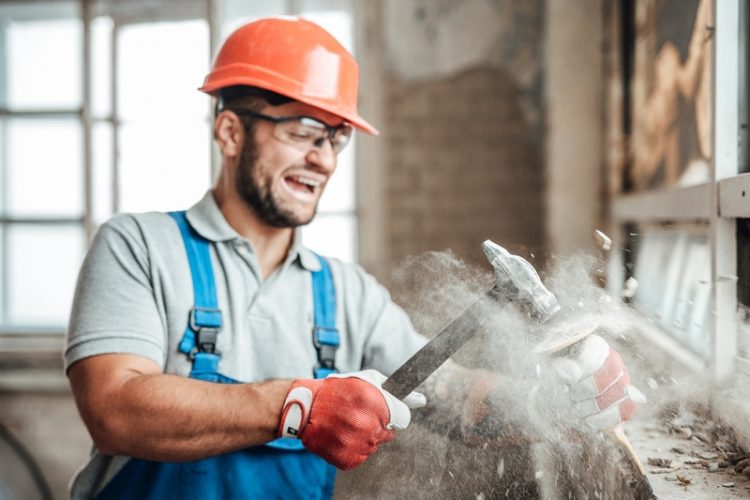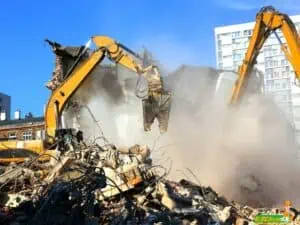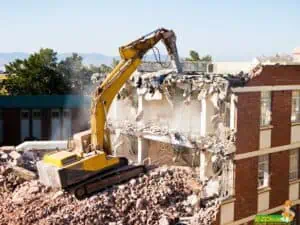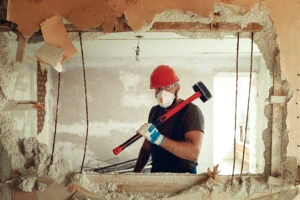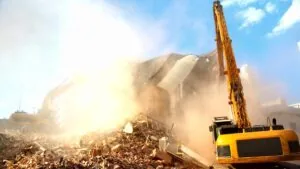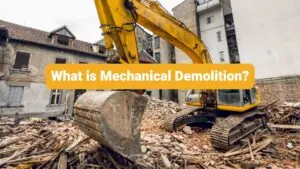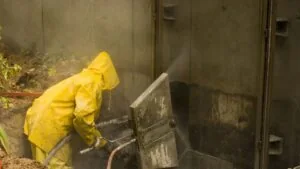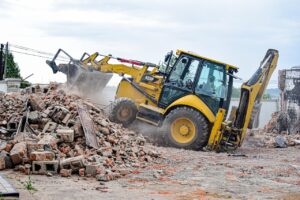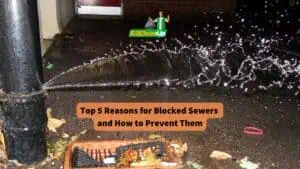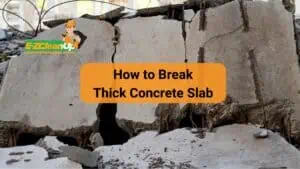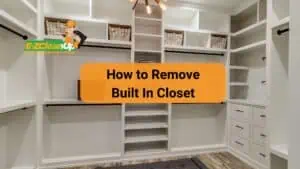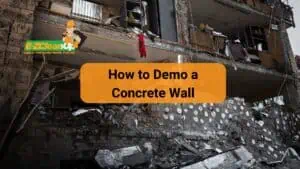Have you ever wondered what “soft demolition” means? You’re in the right place!
Soft demolition is a process that helps transform old, outdated spaces into shiny, new ones.
It’s all about carefully taking apart parts of a building or room to make way for exciting renovations and improvements.
Keep reading to discover how soft demolition works, why it’s important, and the amazing things it can do!
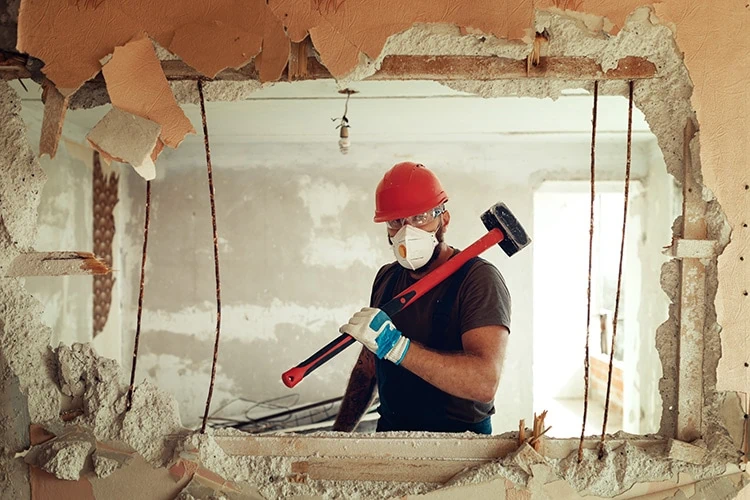
When is Soft Demolition Needed?
Soft demolition can be useful in many situations, whether it’s to create a fresh new look or to make a space more functional. Here are some common cases where soft demolition is needed:
Renovating an Old Building
If a building is outdated or in need of repairs, soft demolition can help remove old walls, ceilings, and floors to make way for new and improved materials.
Changing the Layout of a Space
Sometimes, a room or area might not have the best layout. Soft demolition can remove non-structural walls and partitions to create a more open and efficient space.
Upgrading a Home or Office
When it’s time to give a home or office a fresh new look, soft demolition can be used to remove outdated fixtures, fittings, and finishes, preparing the space for modern updates.
Preparing for New Construction
Before a new building or addition can be built, any existing structures in the way may need to be partially or fully removed. Soft demolition can help clear the area for new construction.
Restoring a Historic Building
When preserving a historic building, soft demolition can be used to carefully remove damaged or deteriorated materials while protecting the structure’s original features and character.
You can find more information on our blog post: What Are The Reasons For Demolition?
Is There Any Difference Between Soft Demolition, Soft Strip Demolition, and Strip-Out Demolition?
You might have heard the terms “soft demolition”, “soft strip demolition”, and “strip-out demolition” and wondered if they’re different. The truth is, these terms are often used interchangeably, but they all refer to the same process.
Let’s dive into what they all mean and how they’re related.
Soft Demolition
As we’ve already learned, soft demolition is the process of carefully taking apart parts of a building or room without affecting the main structure. This can include removing walls, ceilings, floors, and fixtures to make way for renovations, refurbishments, or new construction.
Soft Strip Demolition
This term is another way of describing soft demolition. Just like soft demolition, soft strip demolition involves carefully removing parts of a building or room to prepare it for improvements or changes. The “strip” part of the name emphasizes the process of taking away materials layer by layer.
Strip-Out Demolition
Strip-out demolition is yet another term for the same process. The focus of strip-out demolition is on removing the interior elements of a building or room, leaving the main structure intact. This term highlights the idea of “stripping out” unwanted or outdated materials.
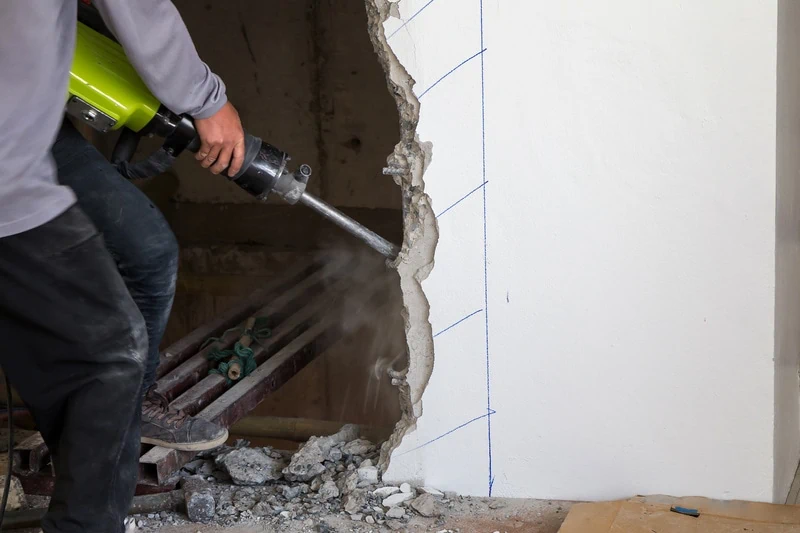
What Are the Stages of Soft Demolition?
Soft demolition might seem like a simple process, but there are several important stages to ensure everything goes smoothly and safely. Let’s explore the key steps involved in soft demolition:
- 1. 📝 Planning: Before the actual demolition work starts, a detailed plan is created. This involves assessing the area to be demolished, identifying any hazardous materials like asbestos, and determining the best approach for safely and efficiently completing the project.
- 2. 🛠️ Preparation: The next stage involves preparing the site for demolition. This may include setting up safety barriers, removing furniture and personal items, and disconnecting utilities like electricity, water, and gas. It’s crucial to make sure the area is safe and secure before starting the demolition work.
- 3. 🔨 Selective Demolition: Once the site is ready, the actual soft demolition work begins. This stage involves carefully dismantling the targeted parts of the building or room, such as walls, ceilings, floors, and fixtures. Specialized tools and equipment are used to break down and remove materials without damaging the main structure.
- 4. 🚧 Debris Removal: As the soft demolition work progresses, debris will be generated. This stage involves regularly clearing away the debris and disposing of it properly, often through recycling or repurposing materials whenever possible.
- Our blog post on ‘What is Demolition Waste’ can give you more information on how the waste is managed.
- 5. 🧹 Cleanup: The final stage of soft demolition is cleanup. After all the demolition work is completed, the site is thoroughly cleaned to remove any remaining debris, dust, and dirt. This ensures the area is safe and ready for the next phase of construction or renovation.
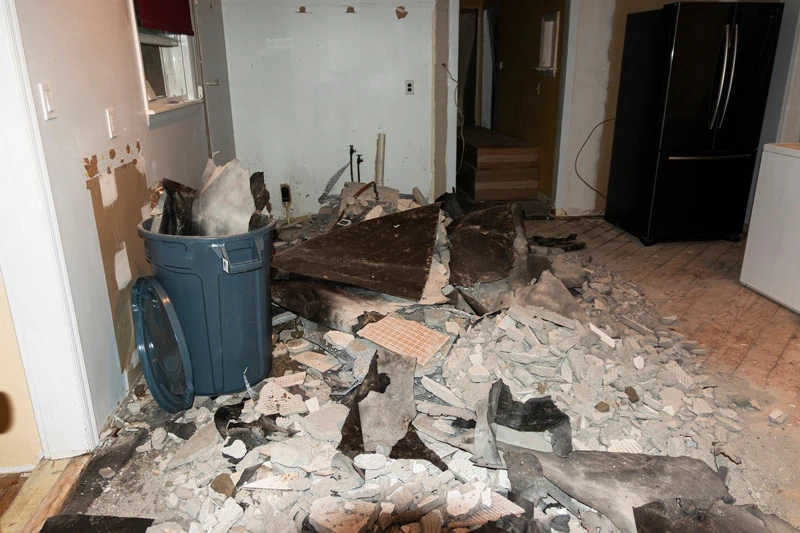
Soft demolition involves a well-organized process with multiple stages to guarantee a safe and successful outcome. By carefully planning, preparing, and executing each stage, soft demolition can transform an outdated space into a blank canvas for exciting new improvements.
What Method is Most Widely Used in Soft Demolition?
The most widely used method in soft demolition is called “hand demolition” or “manual demolition.” This method involves using hand tools and equipment, as well as skilled workers, to carefully dismantle and remove interior elements of a building or room without damaging the main structure.
Here are 5 reasons why hand demolition is so popular for soft demolition projects:
👷 Control and Precision
Hand demolition allows for greater control and precision when removing materials. Skilled workers can carefully take apart walls, ceilings, floors, and fixtures without causing any damage to the remaining structure. This level of control is essential for preserving historical buildings or working in sensitive environments.
🔧 Hand Tools and Equipment
A variety of hand tools are used in this method, such as hammers, crowbars, chisels, and saws. These tools enable workers to break down materials and remove them layer by layer. In some cases, small power tools like electric drills or reciprocating saws might be used for added efficiency, but the focus is still on precision and control.
🌿 Environmentally Friendly
Hand demolition is considered a more environmentally friendly approach to soft demolition because it generates less dust and noise than heavy machinery. Additionally, manual demolition makes it easier to separate and recycle materials, reducing the amount of waste sent to landfills.
🚧 Safety
Using hand tools and skilled workers reduces the risk of accidents and damage to the surrounding structure. By carefully planning and executing the demolition work, hand demolition ensures a safe and controlled process.
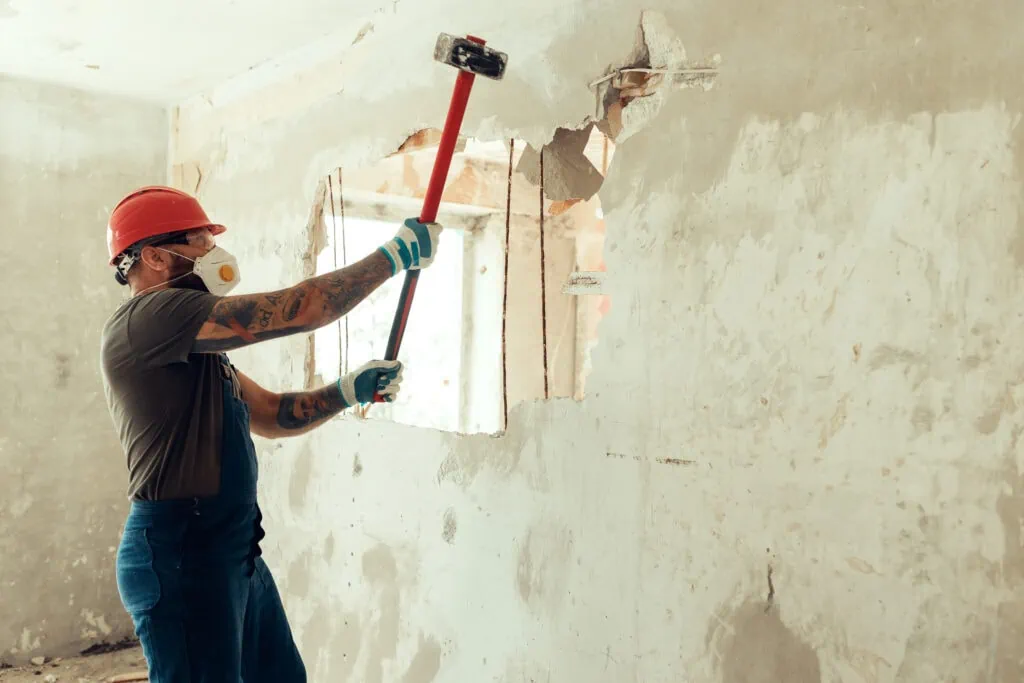
Soft demolition vs. Hard demolition
| Aspect | Soft Demolition | Hard Demolition |
| Definition | Careful removal of interior elements without damaging the structure. | Complete or partial demolition of a building or structure. |
| Purpose | Renovation, refurbishment, or preparing for new construction. | Making way for new construction or removing unsafe structures. |
| Method | Hand demolition using manual tools and skilled workers. | Heavy machinery like bulldozers, excavators, and wrecking balls. |
| Structural Impact | Minimal, preserves the main structure of the building or room. | Significant, involves removing or demolishing the entire structure. |
| Precision and Control | High level of precision and control during the demolition process. | Lower level of precision and control compared to soft demolition. |
| Environmental Impact | Lower dust, noise, and waste production. Easier to recycle materials. | Higher dust, noise, and waste production. Recycling may be harder. |
| Timeframe | Typically faster due to smaller scale and targeted removal. | Can take longer due to larger scale and more complex processes. |
| Safety Risks | Lower risk of accidents and damage to surrounding areas. | Higher risk of accidents and damage due to heavy machinery usage. |
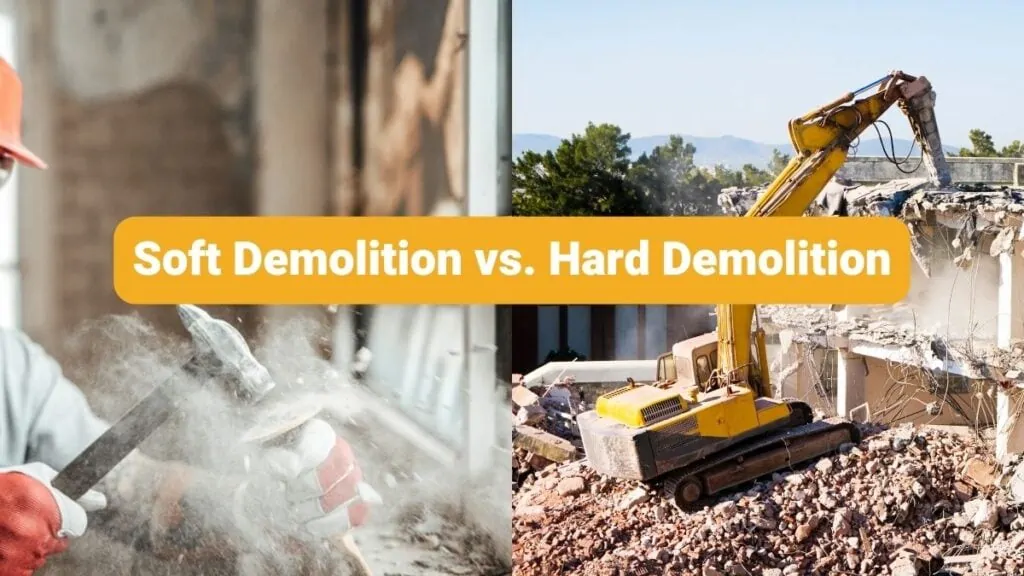
What Should You Look for in Soft Demolition Contractors?
When searching for the perfect soft demolition contractor, there are several important factors to consider. Here’s what to look for to ensure you choose the right team for your project:
#1 Experience
Look for contractors with a proven track record and experience in soft demolition projects, as they’ll have the skills and knowledge to handle the job effectively.
#2 Licenses and Insurance
Make sure the contractor is licensed and insured to work on your site. This ensures they follow safety regulations and are covered in case of accidents or damages.
Our demolition contractors at EZ Cleanup are licensed by both the state of Pennsylvania (#PA112494) and the city of Philadelphia (#211715/36413).
#3 Customer Reviews
Check out customer reviews and testimonials to gauge the quality of the contractor’s work.
#4 Services Offered
Make sure the contractor offers a range of demolition services, including both soft and hard demolition, to accommodate your specific needs. We offer comprehensive demolition services, including interior demolition, shed removal, and much more!
#5 Project Management
Choose a contractor that will manage the entire project, from planning and preparation to cleanup and waste disposal. This will save you time and effort, allowing you to focus on what really matters.
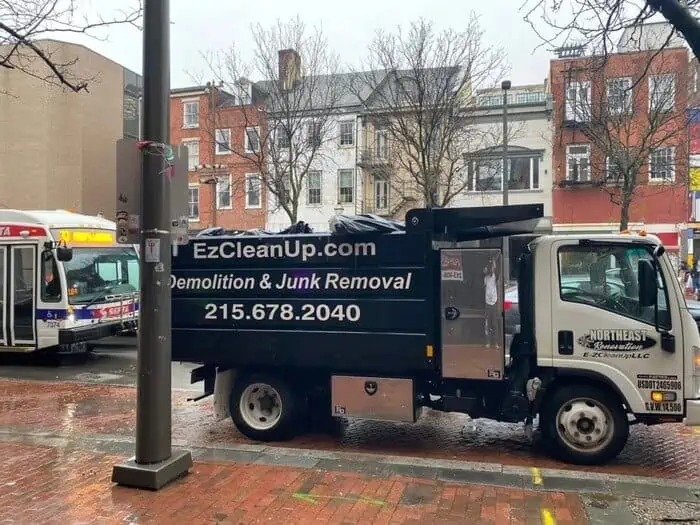
Conclusion:
Soft demolition is an essential part of many renovation, refurbishment, and construction projects. By carefully selecting the right contractor, you can ensure a successful outcome and a transformed space.
EZ Cleanup is a trusted, licensed, and insured demolition contractors with years of experience in both soft and hard demolition projects. Our expert team can handle everything from wall removal to floor breakups, without leaving a mess behind.
Ready to transform your space? Get an estimate on your next soft demolition project with EZ Cleanup today!

